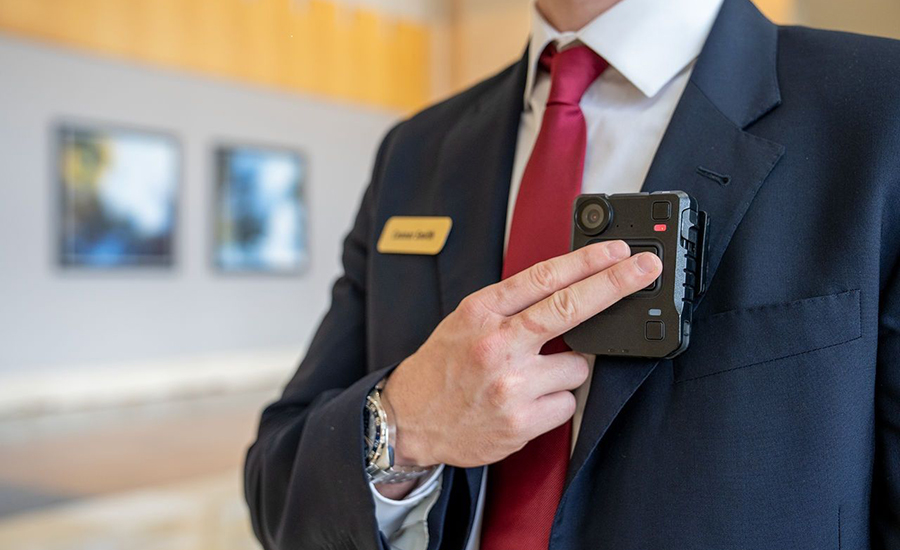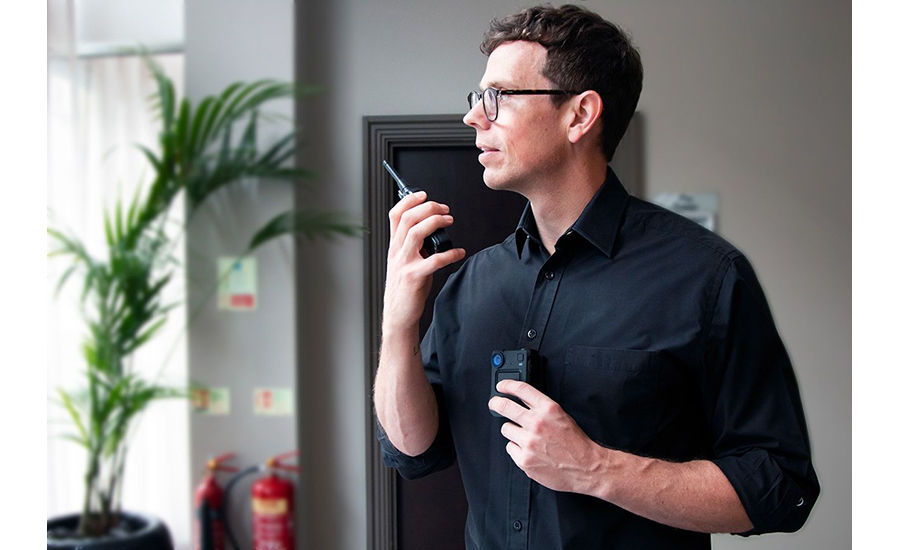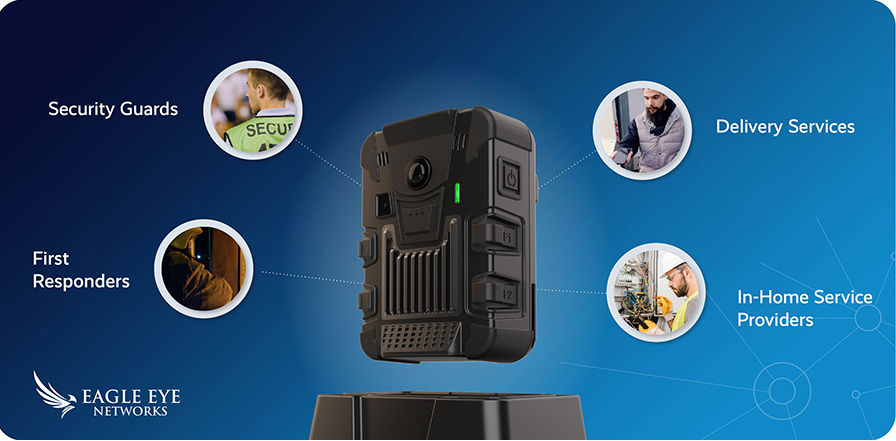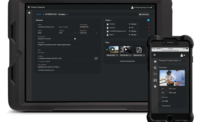There’s been continued uptick in the use of body-worn cameras, by law enforcement and in new emerging markets that leverage the technology for safety, accountability and operational management and control. For example, a study conducted by Mordor Intelligence expects the wearable and body-worn camera market to grow from $6 billion in 2023 to $13 billion by 2028.
In law enforcement, body-worn cameras provide a record of encounters and evidence and may curb violence simply by their presence. Increased use in law enforcement has created research and piqued interest in the product category by other vertical markets, including retail, healthcare, education, airports, parking enforcement and utilities.

Innovation Advances
As camera technology has improved, refinements have migrated to body-worn cameras. The most significant advancements in body-worn cameras are open platform solutions, automatic activation and live streaming, according to Steve Jussaume, solutions engineer, Axis Communications, Chelmsford, Mass.
“Open platform solutions allow more segments to explore body-worn cameras, because not every segment needs unlimited cloud storage or advanced features,” he says. “Many users just want recorded video and audio from a first-hand perspective. Open platforms also provide greater flexibility in terms of cost, making body-worn technology available to those who previously might not have been able to afford it.”
Automatic activation ensures body-worn cameras are recording and providing assistance during stressful situations, Jussaume continues. “One of the most common types of automatic activation is a device inside of a police vehicle integrated into a lightbar, gun rack or door sensor. When an event is triggered, such as full lights and sirens, a signal is sent to the device to start recording. This technology is now being explored by other segments to see how it can integrate into their environments.”
“Open platform solutions allow more segments to explore body-worn cameras, because not every segment needs unlimited cloud storage or advanced features.”
— Steve Jussaume, Axis Communications, Chelmsford, MA
Live streaming, Jussaume explains, lets security operations centers receive important data in real time. “They no longer need to wait for a call or hear secondhand from someone on the scene, allowing the end user to make more strategic decisions based upon what they see in real time. A live-streaming body-worn camera can act like a panic alarm, since the user needs to press a button to activate the stream and inside the command center, an alarm is received with video and audio. If a GPS signal is available, they may also receive the wearer’s location.”
Erick Ceresato, product group senior manager, Genetec Inc., Montreal, says that a significant advancement has been remote activation of live-streaming capabilities from a real time crime center (RTCC). “Operators at an RTCC can aid dispatched officers as they respond to an incident,” he says. “Other advancements include longer battery life, increased available recording time, automatic tagging of recordings based on activation triggers and integration with different systems.”

Easier Interfaces
Enhancements like improved user interfaces make body-worn cameras easier for customers to use and manage, says David O’Connor, director, public safety division, i-PRO Americas Inc., Rolling Meadows, Ill. “Swappable batteries improve reliability and reduce cost of ownership; and open technology strategy supports using body-worn cameras with other systems, like Bluetooth sensors for automated activation. In addition, back-office integration with computer-aided sispatch, record management systems and digital evidence management systems improves cataloging of incidents.”
“If security integrators are already selling fixed cameras and VMS, body-worn cameras are a natural to add to their video portfolio. We’ve also seen a lot of success with resellers who started with radios, but expanded their wearables portfolio into video.”
— Todd Dunning, Motorola Solutions Inc.
Body-worn cameras may also pair with select radios — an integration that allows units to be triggered and immediately start recording when the radio enters an “emergency state” initiated by the user or when the fall alert sensor detects the wearer is down, according to Todd Dunning, director of product management and product operations, video security and access control, Motorola Solutions Inc., Chicago. “Holster aware integration also pairs with sensors over Bluetooth to immediately start recording when the user unholsters their firearm, baton or irritant spray,” Dunning says.
Body-worn cameras have certainly progressed beyond just capturing images, adds Sandeep Vishwakarma, senior product manager, security products, Johnson Controls Inc., Milwaukee.
“With the addition of high-resolution sensors for capturing quality images, GPS data to get coordinates (location) of the wearer, privacy mode, infrared for low light images and quick charging, body-worn cameras provide extensions of video technology to multiple use cases. For example, improvements in codecs have made it possible to live stream video over low-latency wireless connectivity (Wi-Fi/4G (LTE), which can be stored and reviewed,” Vishwakarma says

Expand the Fixed Camera Business
These advancements have made body-worn cameras the perfect technology to expand systems integrations into new markets. Secure 4G and Wi-Fi capabilities, two-way audio, geotagging and alarm features combine with Eagle Eye Networks true cloud infrastructure for body camera applications in retail, in-home services and other commercial entities, says Ken Francis, president, Eagle Eye Networks Inc., Austin, Texas. “Integrators can blend fixed, mobile and body-worn cameras, making it easier for the entire surveillance system to work together and control from the same user interface as traditional fixed cameras, with everything in one place.
Francis sees numerous opportunities for security integrators to expand from traditional fixed cameras into body-worn camera sales. “Body-worn cameras can be used for any form of product delivery or in-home services like nursing care,” he says. “Having a body-worn camera is a risk mitigator. It can be used in auto body shops to ascertain the condition of the vehicle before and after service. Liability and risk mitigation applications are good use cases for body-worn cameras.”
The expansion of body-worn cameras into enterprise security allows security integrators to support their customers by adding a first-person perspective to fixed video cameras, providing valuable data and increasing situational awareness, says Motorola Solution’s Dunning.

“If security integrators are already selling fixed cameras and VMS, body-worn cameras are a natural to add to their video portfolio. We’ve also seen a lot of success with resellers who started with radios, but expanded their wearables portfolio into video,” Dunning adds.
Body-worn cameras are flexible in operation, now being applied in industries where they were never used before, says Vishwakarma, Johnson Controls. “There are immense possibilities and opportunities for systems integrators. Live streaming over cellular networks provides data subscription opportunities to integrators to create recurring revenue models.”

Body-worn cameras can also be sold as a service, adds Axis’ Jussaume. “If the end user asks for cloud storage, there is the potential for recurring monthly revenue (RMR) there. But the most needed service is maintaining body-worn camera hardware. These systems are not like typical security cameras, which are mounted to the ceiling and not touched for years. They are used and handled every day and utilize battery technology. Developing and maintaining a solid hardware maintenance program with your end user will ensure they have the best user experience. This includes things like updating firmware and software, ensuring cameras are in good working order, cleaning the docking stations so the device can establish solid connections and developing a battery replacement program.”




